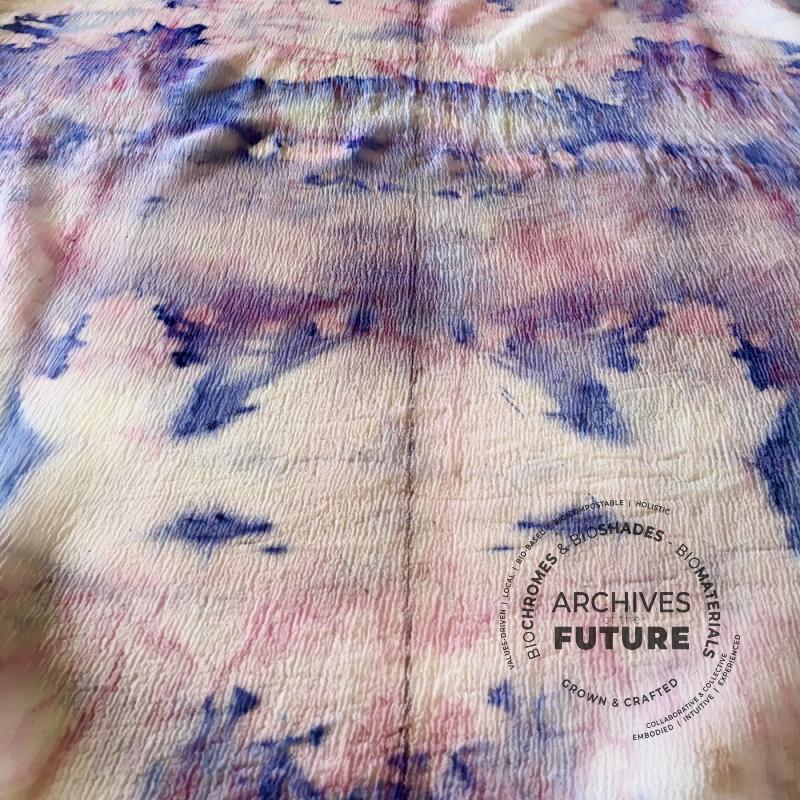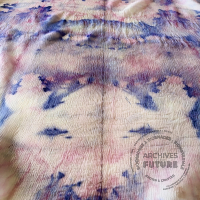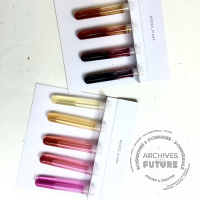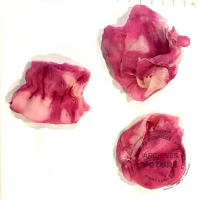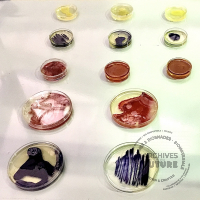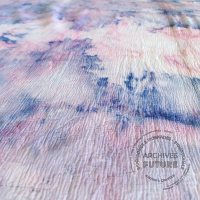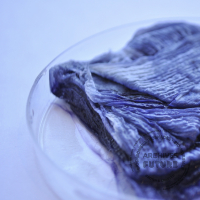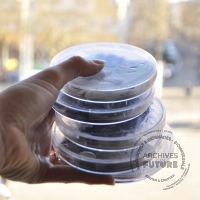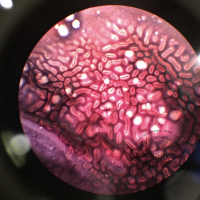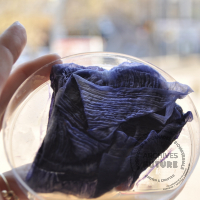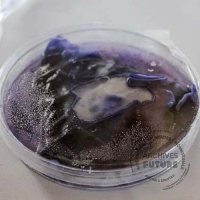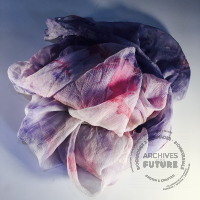Janthino Lividum & Serratia Marcescens | silk
about Janthino Lividum & Serratia Marcescens | silk
Janthino is a single celled organism, an anaerobic soil dwelling bacteria produces violacein, a purple staining biochrome. It has not only staining properties, but also anti-microbial. In fact in nature it can be found growing on the back of certain frogs, with which it develops a symbiotic relation, protecting them from other microbes, while feeding on the CO2 expelled by their skin. The growth of violacein is stimulated by adding glycerine - sugars - in his growing medium, especially at a temperature between 24-28 degrees celcius.
All info regarding the growth, production and use of janthino as a dye can be found on bioshades.bio - the sister archive of biochromes - also part of Archives of the Future, crafted by Cecilia Raspanti to open source her research with all labs and individuals interested, since 2015 on bacterial dyes.
Serratia is a single celled organism, an anaerobic soil dwelling bacteria produces prodigiosin, a pink-red-orange-yellow staining biochrome. It has not only staining properties, but also anti-fungal, anti-viral and anti-biotic. In nature it can be found growing on a avriety of surfaces - in the wild it grows on rotting coconut, while in built environments, it grows in not so clean bathrooms or showers; as well in hospitals. The growth of prodigiosin is stimulated by uncluding phosporus in the growing medium, especially at a temperature between 24-28 degrees celcius.
All info regarding the growth, production and use of janthino as a dye can be found on bioshades.bio - the sister archive of biochromes - also part of Archives of the Future, crafted by Cecilia Raspanti to open source her research with all labs and individuals interested, since 2015 on bacterial dyes.
location | Open WetLab WaagFutureLab
year | 2016
collection | project - BioShades & TCBL - TextileLab Amsterdam
colors | purple, pink
compounds | violacein, prodigiosin,
